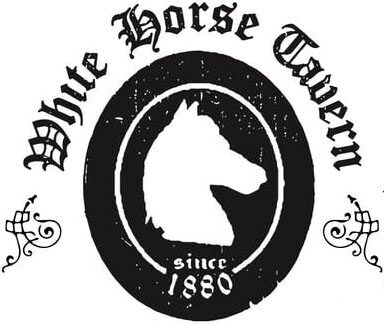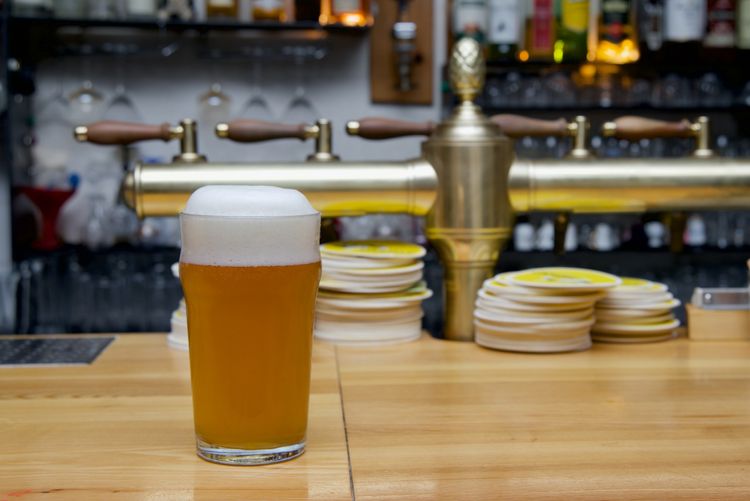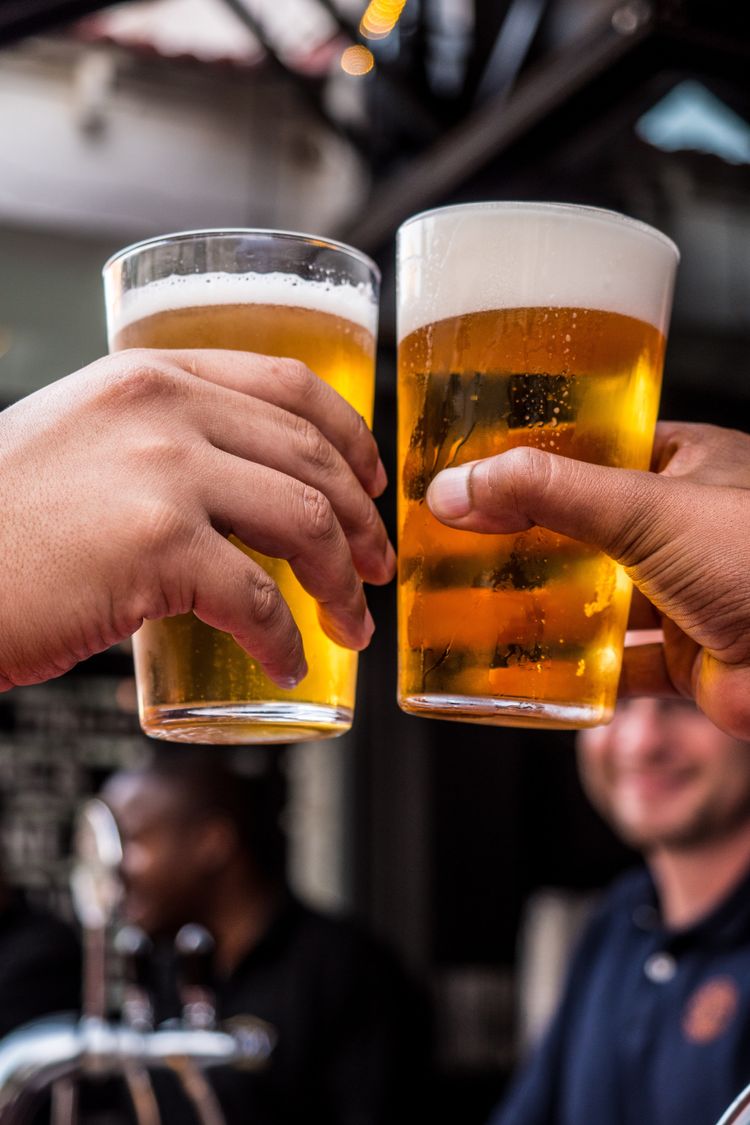Draught beer, also known as draft beer, is often thought to be of higher quality than most other beers due to its very secure packaging, which allows neither sunlight nor oxygen to penetrate the keg.
What is Draught Beer?
Draught beer is beer served directly from a tap as opposed to in a can or a bottle after being stored in a keg with the possibility to pressurize or pump the tap manually. Beer from a keg has a higher quality than other types of beer for several reasons:
- Because a beer’s freshness is critical to its flavor, kegged beer is sure to be more flavorful (and fresher) than bottled beer. Keg prevents oxygen from entering the beer, keeping it fresher for longer.
- Draft beers retain their aroma and flavor better than bottle beers because sunlight cannot penetrate the keg, whereas bottle beer loses its dilution.
- Draft beers can store their aroma and enhance their flavor because sunlight cannot penetrate the kegs, whereas bottle beers lose their scent because sunlight can easily penetrate these bottles.
As a result of a new law, loose foods are labeled the same way as packaged foods; for example, draft beers are classified as open foods because they are sold in quantities. As a result, draft beer retailers must be aware of allergenic ingredients.
As the saying goes, beer is food. Although we may think of beer as a refreshing accompaniment to food, it is an agricultural product that requires a lot of resources to produce – primarily grains and water – and provides sustenance in the form of calories.
Why is it Called Draught Beer?
The beer engine was invented in 1785, but the beer was previously transported and served directly from barrels. The original word for the draft was Dragan, which meant “to pull or carry.” “It is spelled draft in North America, but draught in Europe, Ireland, Australia and New Zealand.
Although they are spelling variations, they cannot be used interchangeably. While the draft is much more common in American English, draught can occasionally be found in references to imported beer or beer served “on draft” at either particularly swanky or mainly British establishments.
What is the Difference Between Draft Beer and Draught Beer?
The words “draft” and “draught” have been used as marketing terms to describe canned or bottled beers, implying that they taste and look like beers from a cask or keg,” according to Wikipedia. Commercial brewers use this as a marketing tool, but calling any beer that is not drawn from a cask or keg “draught” is incorrect.
So the question is, is there a distinction? “Draught and draft are different spellings of the same word,” according to Writing Explained. However, these spellings are used multiple times in various parts of the world.” That’s right; they’re the same thing. Draught is a more common spelling in European spellings, while the draft is more common in American English.
Does Draught Beer Taste Better?
Draft beer is preferred over bottled or canned beer mainly because of its freshness. Because freshness significantly impacts flavor, beer poured from a keg is expected to be fresher (and tastier) than bottled beer. Draft beer will stay fresh if the proper temperature and pressure are maintained.
When these characteristics are present, draft beer distinguishes itself from other options. Unpasteurized draft beer can keep its freshness for 45-60 days, while pasteurized draft beer can keep fresh for 90-120 days.
Most companies now print a freshness date on the lid or side of each keg for quality assurance. Most importantly, depending on the type of beer, a tapped keg will only last about one to three days. As a result, ensure that the beer remains fresh from when it enters the bar until served.
On the other hand, pressure is an important factor in maintaining freshness. The pressure keeps the beer carbonated and fresh from the keg to the glass. The amount of pressure used influences how the beer is dispensed. Too much pressure results in a foamy beer that pours quickly from the faucet.
Sure, the beer’s serving temperature is determined, but it is also critical to maintaining the temperature constant. It’s impossible to tell how many times a bottled beer has been in and out of the fridge. Temperature inconsistencies cause your beer to age much faster than expected.
Temperature
However, in draft beers, temperature control is also required. You must store your beer kegs at the proper temperature and keep track of them. Temperature control keeps them from spoiling. They taste much better and fresher this way than bottled beers.
Exposure to Light
Have you ever noticed that most beer bottles are brown instead of clear? It is not by chance! Light exposure spoils beer, so companies use tinted glass in their beer bottles to keep the beer from breaking. Bottled beer is exposed to light somehow, whether during transportation or storage. The beer loses flavor when exposed to sunlight. Kegs, on the other hand, are not exposed to any light. Unlike bottled beer, the beer only sees daylight when poured from the taps.
Draught beer on tap is some of the freshest, most flavorful beer you can find, provided it is handled well from the brewery to the bar to your glass. And when considering West Village bars, remember that the White Horse Tavern offers nearly a dozen beers on tap.


